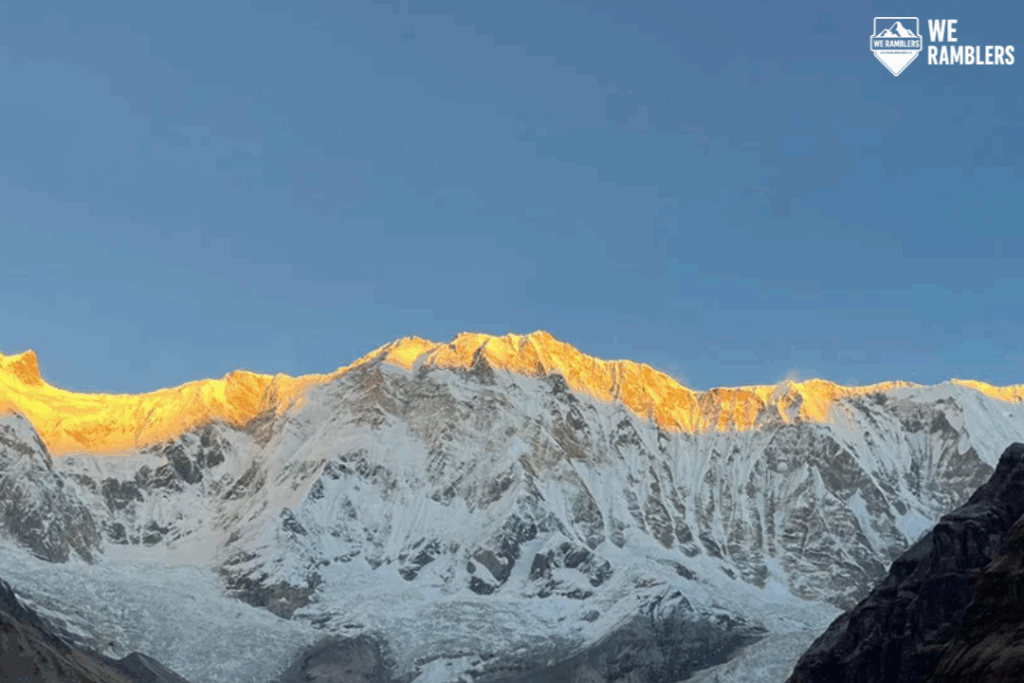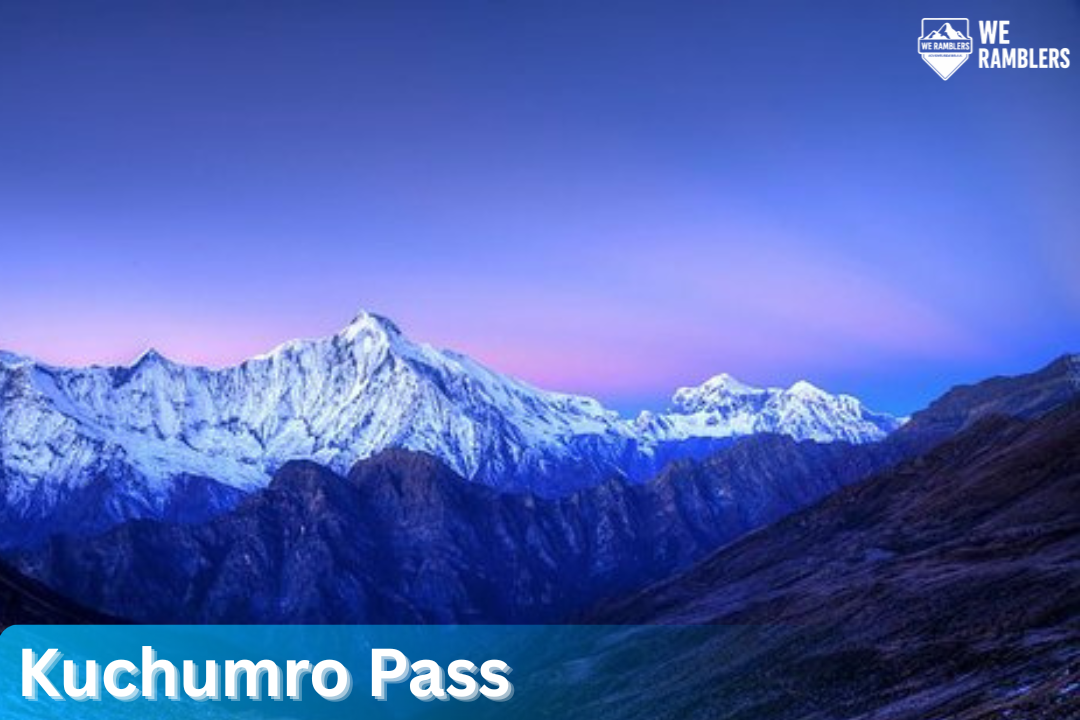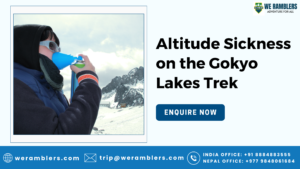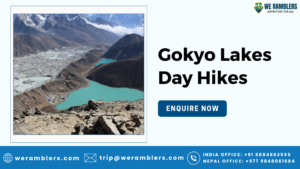Kuchumro Pass Trek: Discovering Nepal’s Untouched High-Altitude Secret
Hidden away in the far reaches of Nepal’s mystical Nar Phu Valley lies a trekking experience few have even heard of — Kuchumro Pass. Towering above 4,900 meters, this remote crossing offers one of the most isolated and awe-inspiring routes in the entire Himalayan range. Unlike the bustling corridors of Everest or Annapurna, the Kuchumro Pass trek remains largely untouched, inviting only the most intrepid explorers to walk its wild, solitary path.
Here, the Himalayas reveal their raw, unspoiled beauty — shimmering glaciers, emerald alpine meadows, and sweeping valleys guarded by snow-draped giants. The stillness is broken only by the distant calls of blue sheep or the silent flight of Himalayan griffons. Occasionally, the elusive snow leopard leaves its trace in the soft snow. For seasoned trekkers yearning for a true high altitude trek Nepal adventure, Kuchumro Pass offers unmatched solitude, pristine wilderness, and an authentic immersion into nature’s grandest stage.
Why Trek to Kuchumro Pass?
The Kuchumro Pass trek stands apart from Nepal’s more commercialized routes because of its extreme isolation. With barely any tourist traffic, you can often walk for days without encountering another group of trekkers. This is true offbeat trekking Nepal at its finest.
Unlike other popular trails, Kuchumro provides trekkers with uninterrupted serenity, allowing a profound sense of self-reflection amidst towering snow peaks. The absence of crowds enhances the immersive experience, where the only sounds are crunching footsteps, wind-whipped prayer flags, and distant yak bells. The raw and untouched nature of this trail makes every step feel pioneering, offering a profound sense of accomplishment that few Himalayan treks can match.
The route weaves through wild alpine terrain, passes glacial moraines, and traverses high ridgelines under towering peaks. But it’s not just about the raw scenery; this journey plunges you into a rich cultural world, where ancient Tibetan Buddhist traditions still thrive in hidden villages like Nar and Phu. The route offers technical challenges, remote navigation, and moments of true wilderness solitude—perfect for anyone craving a hidden Himalayan trail.
Geography and Route Significance
The Kuchumro to Nar route forms a crucial link between the Phu Valley and the ancient settlements around Nar. Situated north of the Annapurna Massif, the pass cuts across glacier-fed rivers, high-altitude grasslands, and jagged ridgelines. On clear days, trekkers can marvel at sweeping views of Kang Guru, Himlung Himal, and even distant peaks of Tibet.
The trail’s geography shifts dramatically as you ascend. Verdant valleys give way to stark scree fields, icy rivers, and desolate, windswept plateaus. Alongside spectacular mountain views, trekkers traverse regions shaped by millennia of glacial activity, where the silence of the landscape feels almost spiritual. The trail embodies Nepal’s diverse geological drama, offering trekkers both visual wonder and historical depth.
Historically, trails like Kuchumro were used by traders and yak herders to connect isolated valleys and barter goods across high passes. The Kuchumro Pass served as a vital corridor for exchanging salt, wool, and barley between Nepal and Tibet before modern borders restricted such trade. Today, it offers an unparalleled route for modern trekkers to trace ancient footsteps through some of Nepal’s most dramatic landscapes.
Best Time to Trek Kuchumro Pass
The best time to trek Kuchumro Pass is during Nepal’s classic trekking seasons: April–May and September–November. These windows provide the most stable weather, clear skies, and manageable temperatures for high-altitude crossings.
During these months, wildflowers bloom across the alpine meadows, and the skies remain crystal clear, offering uninterrupted views of the towering Himalayan giants. Morning sunrises illuminate snow-capped ridges in brilliant hues of pink and gold, making each day feel magical. These periods also see lower chances of avalanches and rockfall, improving safety during the crucial pass-crossing days.
During the monsoon (June to August), heavy rains can cause landslides and slippery trails, while winter (December to February) often leaves the pass snowbound and nearly impassable. Since the Kuchumro Pass trek involves steep ascents and exposed crossings, stable weather is essential to ensure safe passage. Always monitor forecasts closely and allow flexibility in your itinerary for weather delays.
Kuchumro Pass Trek Itinerary
Here’s a flexible Kuchumro Pass itinerary that balances acclimatization, cultural immersion, and physical challenge:
Day 1: Drive from Kathmandu to Koto (2,600m)
- Long scenic drive via Besisahar and Dharapani into the Manang region.
- Stunning views of terraced fields, roaring rivers, and hillside villages mark the journey.
Day 2: Koto to Meta (3,560m)
- Enter the restricted Nar Phu Valley. Cross suspension bridges, climb through pine forests.
- The landscape grows more rugged and remote as you ascend into higher alpine zones.
Day 3: Meta to Phu Village (4,080m)
- Stunning cliffs, canyons, and remote herder camps along the route.
- En route, you may spot ancient caves once used by Buddhist monks for meditation.
Day 4: Acclimatization day in Phu
- Visit Tashi Lhakhang Monastery; explore Phu’s traditional stone houses.
- Spend the day absorbing local culture, chatting with villagers, and preparing for altitude gain.
Day 5: Phu to Kuchumro Base Camp (approx. 4,600m)
- Begin the ascent toward the pass; camp near the base.
- The views here are some of the most dramatic, with glaciers looming above.
Day 6: Cross Kuchumro Pass (5,000m+) to Nar (4,110m)
- The most demanding day; cross the wind-swept saddle and descend to Nar.
- The narrow ridge requires careful footing; panoramic views make every step worthwhile.
Day 7: Nar to Ngawal or Manang
- Option to continue towards the Annapurna Circuit, or extend toward Mustang.
- Enjoy the gradual descent into greener valleys, with options to resupply in Manang.
Day 8–10 (Optional Extension): Thorong La Pass or Tilicho Lake Trek
Beyond Phu, no teahouses exist—this is a fully supported camping expedition. Alternative combinations include linking with Thorong La or Tilicho Lake for an even more challenging remote Himalayan trek.
Permits and Regulations
Since this route lies within a restricted zone, special documentation is mandatory. You will need the Nar Phu restricted area permit, which regulates access to the Nar and Phu valleys. Additionally, an Annapurna Conservation Area Permit (ACAP) is required.
Permit costs vary, but the restricted permit can only be secured through licensed trekking agencies. Independent trekking is prohibited to maintain both safety and cultural preservation in this delicate region. It’s advisable to plan your trek well in advance to allow time for paperwork and securing a qualified guide who understands the intricacies of this lesser-known Nepal trek.
Permits can be arranged through licensed trekking agencies registered with Nepal’s Department of Immigration. Individual trekkers cannot apply for restricted area permits directly, and hiring a registered guide is compulsory. These permits are typically processed in Kathmandu or Pokhara, often taking a day or two depending on agency support.

Trekking Difficulty and Physical Demands
Make no mistake: the Kuchumro Pass trek is not for beginners. Its combination of steep elevation gains, rugged scree fields, unpredictable snow patches, and isolated terrain demands excellent physical conditioning and prior high-altitude experience.
Unpredictable weather, rapid altitude changes, and sections of technical scrambling further increase the challenge. Trekkers must be comfortable carrying packs for extended periods while navigating narrow ledges and slippery slopes. The remoteness adds psychological difficulty, as rescue or evacuation options are limited compared to mainstream routes like Everest or Annapurna. This is classic Nepal alpine trekking—remote, self-sufficient, and technically demanding.
Navigating through unmarked or scarcely trodden paths requires strong route-finding skills, making the assistance of an experienced guide and porter highly recommended. Only confident and well-prepared trekkers should attempt this route.
Altitude and Acclimatization Advice
At elevations exceeding 5,000 meters, altitude sickness becomes a serious concern. Many trekkers feel the effects even at Phu Village (around 4,200m). Proper acclimatization is vital.
Symptoms such as headaches, nausea, dizziness, and fatigue are common if one ascends too quickly. Trekking slowly, with planned rest days, helps the body adjust to the thinning air. Stopping at both Nar and Phu villages allows not only cultural immersion but vital recovery time for your lungs and muscles. Carrying a pulse oximeter can help monitor oxygen levels throughout the journey.
Spend extra nights in both Nar and Phu villages to allow your body time to adjust. Drink plenty of fluids, eat regularly, and consider carrying altitude medication like acetazolamide if prescribed. Following a gradual ascent schedule is your best defense against AMS (Acute Mountain Sickness), and never hesitate to descend if symptoms worsen.
Essential Gear and Packing Tips
For this high altitude trek in Nepal, your packing list should prioritize safety, warmth, and navigation:
- Sleeping Gear: Four-season sleeping bags (R-value 4+), high-quality insulated tents.
- Clothing: Layered system with down jackets, base layers, windproof shells, and waterproof pants.
- Trekking Equipment: Trekking poles, crampons or microspikes (depending on snow), high-ankle boots.
- Navigation: Detailed maps, GPS devices, or satellite messengers (Garmin InReach recommended).
- Miscellaneous: Ample snacks, water purification systems, cash (no ATMs), necessary permits, and multiple ID copies.
Additionally, power banks, solar chargers, and spare batteries are crucial, as there are no recharging facilities after Meta. A comprehensive first-aid kit with altitude medication, blister care, and emergency contact information is non-negotiable on such a remote Himalayan trek.
Cultural Highlights Along the Way
Few trails offer the cultural depth found along the Kuchumro Pass trek. The Nar and Phu villages are ancient settlements that preserve Tibetan Buddhist heritage nearly untouched by modern tourism. Their medieval stone houses, hand-carved chortens, and vibrant monasteries provide deep spiritual context to the trek.
Prayer wheels spin beside narrow lanes, and elderly locals chant mantras under colorful prayer flags. Visiting monasteries such as Tashi Lhakhang gives trekkers a glimpse into centuries-old monastic practices still followed today. Festivals, often based on the lunar calendar, bring entire villages together in colorful, mask-laden ceremonies that few outsiders ever witness. This blend of stark wilderness and living Buddhist tradition is what makes offbeat trekking Nepal so enriching.
Trail Extensions and Combinations
One of the great advantages of choosing the Kuchumro Pass trek is its flexibility to combine with other lesser-known Nepal treks:
- Nar Pass or Phu Pass for additional high crossings.
- Merge with the classic Annapurna Circuit by continuing towards Tilicho Lake or Thorong La.
- Extend west into the isolated Mustang region for a true multi-pass odyssey.
For hardcore trekkers, combining these trails creates an epic circuit traversing multiple valleys, climates, and ethnic communities, offering one of the most comprehensive Nepal alpine trekking experiences available. Every additional pass adds to both the challenge and the beauty, crafting a deeply personalized journey that very few in the world have completed.
Conclusion and Final Thoughts
The Kuchumro Pass trek represents one of Nepal’s final frontiers for true wilderness adventure. Unlike the well-trodden Annapurna or Everest circuits, here you’ll find empty trails, ancient cultures, and vast alpine silence. This is a journey for serious adventurers who crave solitude, authenticity, and raw Himalayan beauty.
For those willing to prepare and venture deep into this wild frontier, Kuchumro Pass offers something increasingly rare: genuine exploration. In an age of over-tourism, finding such unspoiled trails is a gift. Among the many lesser-known Nepal treks, this route stands as a pure, demanding, and unforgettable pilgrimage into the heart of the Himalayas.
Trek Kuchumro Pass with We Ramblers
For those seeking a safe and expertly organized Kuchumro Pass trek, We Ramblers offers specialized trekking packages tailored for this remote Himalayan journey. With experienced guides, full camping support, and meticulous attention to acclimatization and safety, we ensure your adventure is both exhilarating and secure. Our deep local knowledge allows trekkers to fully experience this hidden gem of Nepal with confidence. Contact us today to book your trekking package.





